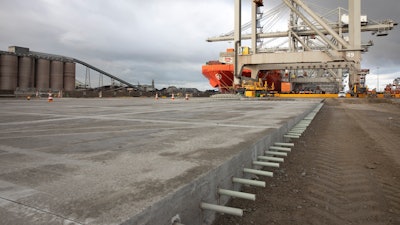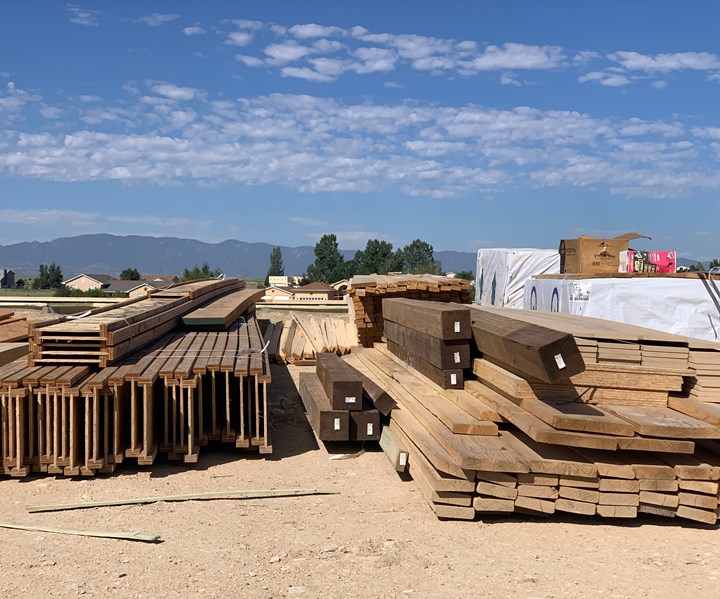Composites: The Future of Lasting Construction Materials
Composites: The Future of Lasting Construction Materials
Blog Article
Opening the Environmental Benefits of Recycled Compounds in Building And Construction and Layout
In the realm of building and style, the utilization of recycled compounds holds considerable guarantee for enhancing sustainability techniques and minimizing ecological impact (composites). By incorporating these cutting-edge materials, there is a possible to deal with important issues such as waste minimization, energy preservation, and a reduction in carbon impact. The shift in the direction of a much more sustainable future in these sectors depends upon unlocking the full capacity of recycled compounds. This conversation will explore the complex benefits and challenges connected with incorporating recycled composites right into building and design, using a glimpse right into the transformative opportunities that exist ahead.

Environmental Effect Decrease
The decrease of ecological effect through using recycled composites in construction and design plays an important role in sustainable practices. By incorporating recycled composites into building materials, the building and construction industry can substantially reduce its carbon footprint and add to an extra eco-friendly future. These lasting products, made from repurposed plastics, wood fibers, or other recycled elements, offer a sensible alternative to typical construction products without compromising on top quality or durability.
Recycled composites assist divert waste from garbage dumps and lower the requirement for drawing out raw materials, hence preserving all-natural resources. Additionally, the production process of these composites commonly consumes less energy and produces fewer greenhouse gases contrasted to generating virgin products (composites). This change in the direction of making use of recycled compounds not only decreases ecological injury yet likewise promotes a round economic situation by urging the reuse of products that would or else be disposed of
Waste Minimization
With a concentrate on reducing waste in building and construction and layout, the integration of recycled composites provides a sustainable solution to decrease environmental impact. Waste minimization is a crucial element of sustainable techniques, and the usage of recycled compounds offers a possibility to achieve this goal properly. By using products that have currently served their first objective, such as recycled plastics or redeemed wood fibers, the building and construction and layout markets can significantly minimize the amount of waste created and sent to land fills.
Recycled composites have the possible to divert considerable amounts of waste from conventional disposal approaches, adding to a more round economy where resources are utilized efficiently. Furthermore, the production procedure of recycled compounds usually takes in much less power and generates fewer emissions contrasted to virgin products, better reducing the environmental footprint of building and layout projects.
Executing waste reduction techniques with the incorporation of recycled composites not only assists in preserving natural deposits however also promotes an extra sustainable approach to building and designing for a greener future.
Power Conservation
Incorporating recycled compounds not only minimizes waste in construction and layout but likewise plays a critical role in enhancing power conservation techniques within the market. Making use of recycled composites in building and construction can Get More Info dramatically add to power preservation via numerous ways. First of all, the manufacturing of virgin products generally needs significant power inputs, whereas using recycled composites takes in much less power, consequently decreasing total power usage. In addition, incorporating recycled composites can add to better insulation buildings in buildings, decreasing the demand for excessive home heating or air conditioning, and as a result reducing power use for environment control. Additionally, the light-weight nature of many recycled composites can cause lighter frameworks, requiring less power for transport and installment. By advertising the use of recycled composites in building and layout, the sector can make significant strides towards accomplishing energy effectiveness and reducing its carbon footprint, eventually contributing to a much more lasting constructed environment.
Carbon Impact Reduction
Enhancing sustainability practices with the usage of recycled composites in building and construction and style significantly decreases the carbon impact of the sector. By including recycled products into the production of compounds, the need for virgin sources reduces, bring about reduced energy consumption and greenhouse gas emissions connected with standard production procedures. This decrease in carbon impact is critical in combating climate change and promoting a much more environmentally friendly method to building and design.
Additionally, using recycled composites additionally aids in diverting waste from landfills, consequently minimizing the ecological influence of disposal and advertising a round economy. The carbon footprint reduction attained via the adoption of recycled composites straightens with the international press towards sustainable practices and the decrease of commercial emissions. It showcases a commitment to accountable source administration and a change in the direction of greener options in the construction and design fields. Eventually, by prioritizing the integration of recycled composites, the industry can make substantial strides in decreasing its carbon footprint and contributing to a more lasting future.
Sustainable Future
The combination of recycled composites in construction have a peek at this site and style not only addresses immediate environmental worries but additionally lays a solid structure for a sustainable future in the market. By incorporating recycled compounds into building products and products, the building and construction and style fields can dramatically lower their dependence on virgin resources, bring about a much more circular economy. This shift in the direction of sustainability is crucial for mitigating the environmental effect of standard building and construction practices, which usually result in high levels of waste generation and resource deficiency.

Conclusion
Finally, recycled composites provide considerable ecological advantages in construction and style by lowering environmental impact, reducing waste, saving power, reducing carbon impact, and promoting a sustainable future. Welcoming making use of recycled compounds can add to a more environmentally-friendly method to building and style, inevitably causing an extra lasting and greener future for all.
The decrease of environmental effect with the use of recycled compounds in building go now and construction and style plays a critical duty in lasting methods.With a focus on lessening waste in building and construction and style, the combination of recycled compounds uses a sustainable solution to lower ecological impact. By advertising the use of recycled compounds in building and style, the market can make considerable strides towards accomplishing power performance and lowering its carbon impact, ultimately adding to an extra lasting developed environment.

Report this page